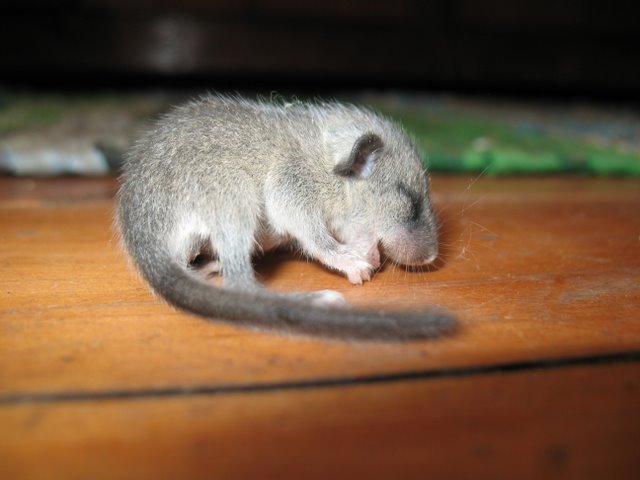|

The biological
complexity and interdependence of species of tropical forests is
commonly referenced, but only just beginning to be understood. The best
conservation strategy can be achieved with knowledge of species’
ecology. Unlike other vertebrate groups like birds, the biology of the
small mammals of the central African countries is poorly known. Basic
data like species numbers, population densities and habitat requirements
are not available.
African Dormouse
Graphiurus murinus
There is no species
list for the small mammals that occur in Bwindi Impenetrable National
Park (BINP). Of the sixty species of small mammals that had been listed
for BINP by Butynski (in 1984), fifteen were labelled “probable” (that
is, suspected to occur but not observed during the survey). BINP needs
more detailed attention for its small mammal fauna.
This study aimed at; 1)
identifying small mammals and estimating their densities and biomass, 2)
assessing seasonal changes in spatial distribution of small mammals and
3) assessing small mammal biomass and density fluctuations in relation
to environmental factors. Two Sherman and three Havahart trap sizes, as
well as pitfall traps were used for trapping. These traps were set up in
three study plots which were located between altitudes 2,118m and 2,263m
above sea level. The study plots were divided into closed canopy, sparse
canopy and open canopy plots, depending on the vegetation structure. A
grid of 10 x 10m was established in each of the three plots and sampled
monthly, between April and September 1992. 52 trappings were made in
each plot. Total number caught and direct enumeration methods were used
to estimate the population size of the small mammals. The differences in
community composition and species diversity indices were described in
relation to different vegetation structure.
A total of 1232 rodents
(15 species) were recorded in 5747 captures. 5 insectivores were also
caught. The open canopy forest recorded the highest number of rodent
species (14), while the closed canopy recorded the lowest (8). 11
species of rodents were recorded in the sparse canopy forest. Trapping
results revealed that 9 species of small mammals were entirely
terrestrial, 6 scansorial (climbing species) and 3 arboreal.
Shannon-Wiener and Simpson Species diversity indices were highest in the
sparse canopy forest and lowest in the closed canopy forest.
The author concludes by
recommending that further research into the ecology of small mammals in
different parts of the park is necessary since this had been the first
of a kind in BINP.
|
Species |
Number of individuals caught |
|
Terrestrial |
Closed canopy forest |
Sparse canopy forest |
Open
canopy forest |
|
Hybomys univitatus |
47 |
76 |
68 |
|
Lophuromys flavopunctatus |
0 |
26 |
50 |
|
Lophuromys woosnami |
8 |
22 |
30 |
|
Mus
bufo |
1 |
8 |
10 |
|
Ottomys irorratus |
0 |
3 |
1 |
|
Cricetomys gambianus |
0 |
0 |
1 |
|
Scansorial |
|
Dendromus mesomelas |
0 |
16 |
24 |
|
Graphiurus murinus |
45 |
32 |
33 |
|
Praomys jacksoni |
169 |
110 |
118 |
|
Hylomyscus denniae |
86 |
100 |
125 |
|
Hylomyscus stella |
4 |
7 |
5 |
|
Rattus rattus |
2 |
0 |
0 |
|
Arboreal |
|
Thamnomys venustus |
0 |
1 |
2 |
|
Oenomys hypoxanthus |
0 |
0 |
1 |
|
Paraxerus boehmi |
0 |
0 |
1 |
|
Total number of species |
8 |
11 |
14 |
|
Diversity index |
|
Shannon-Wiener, H |
1.373 |
1.881 |
1.935 |
|
Simpson, D |
0.694 |
0.810 |
0.821 |
|


